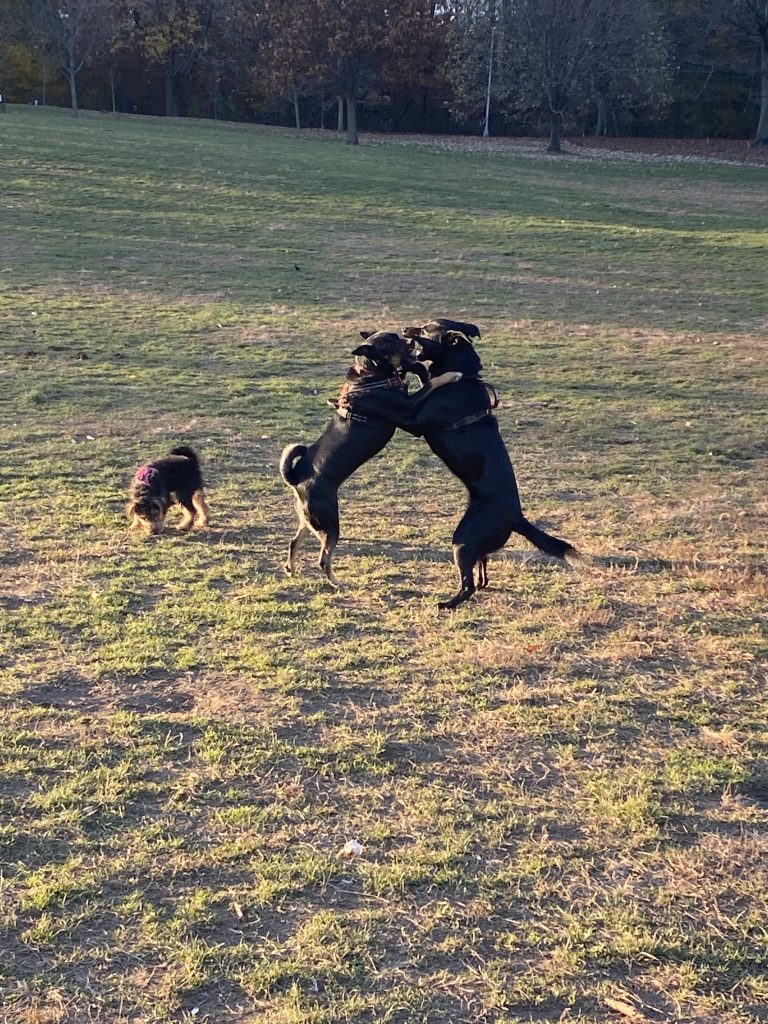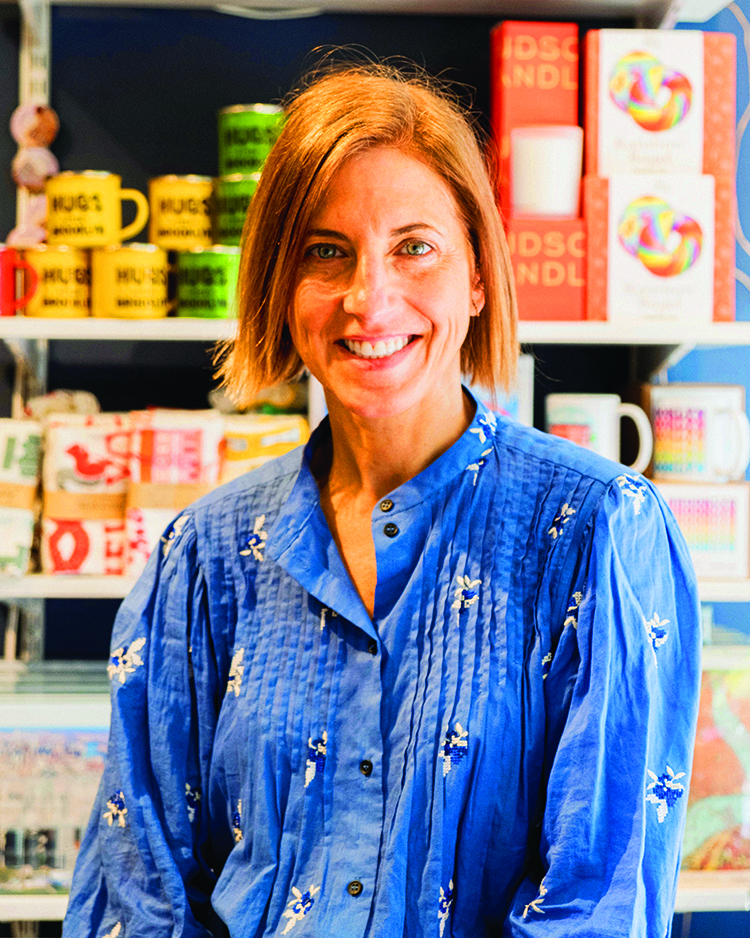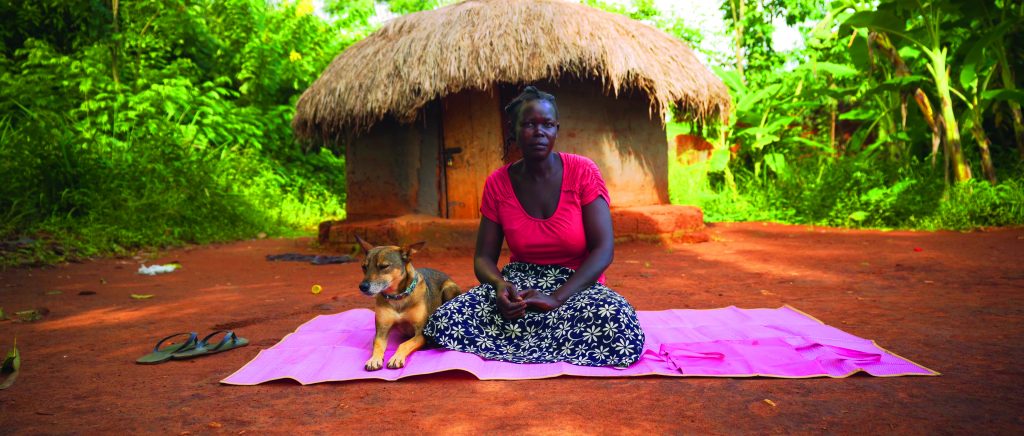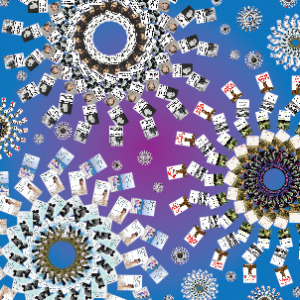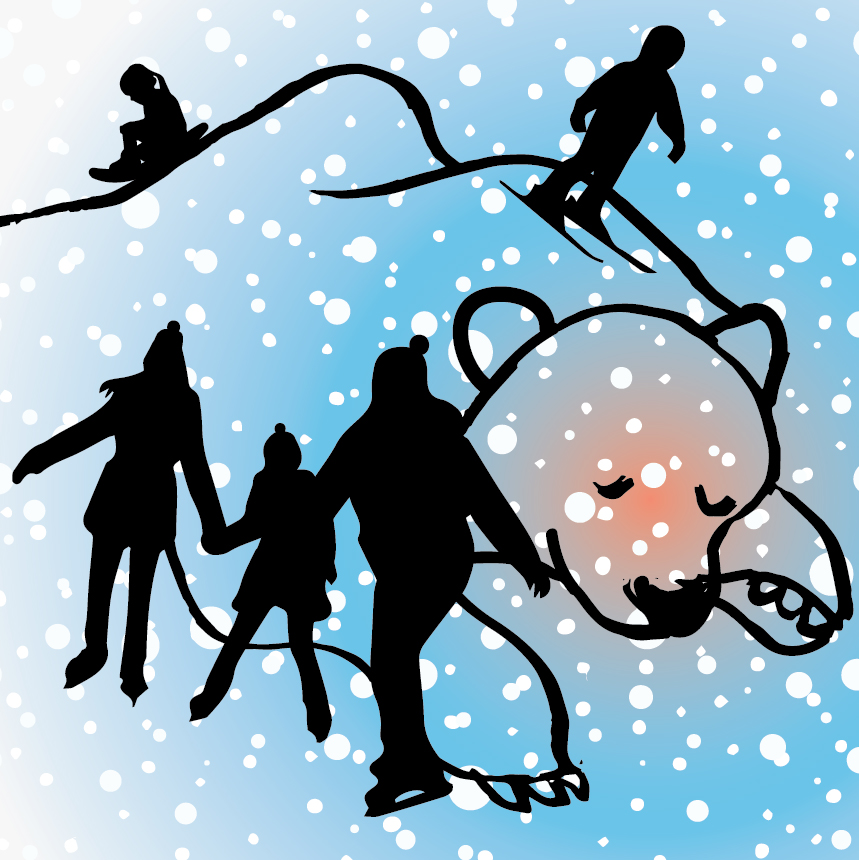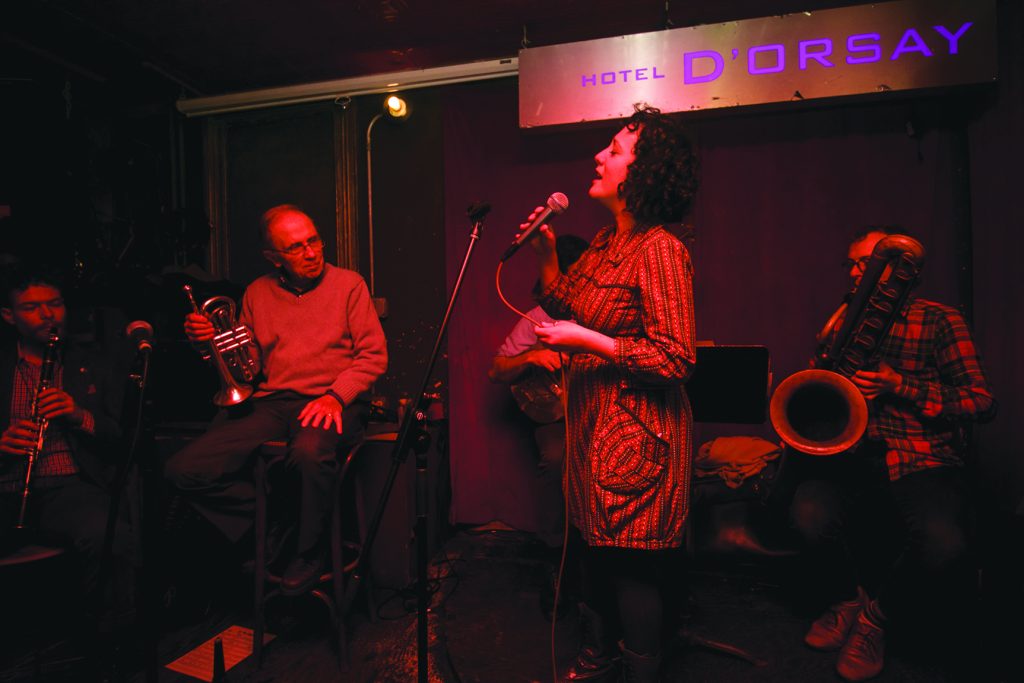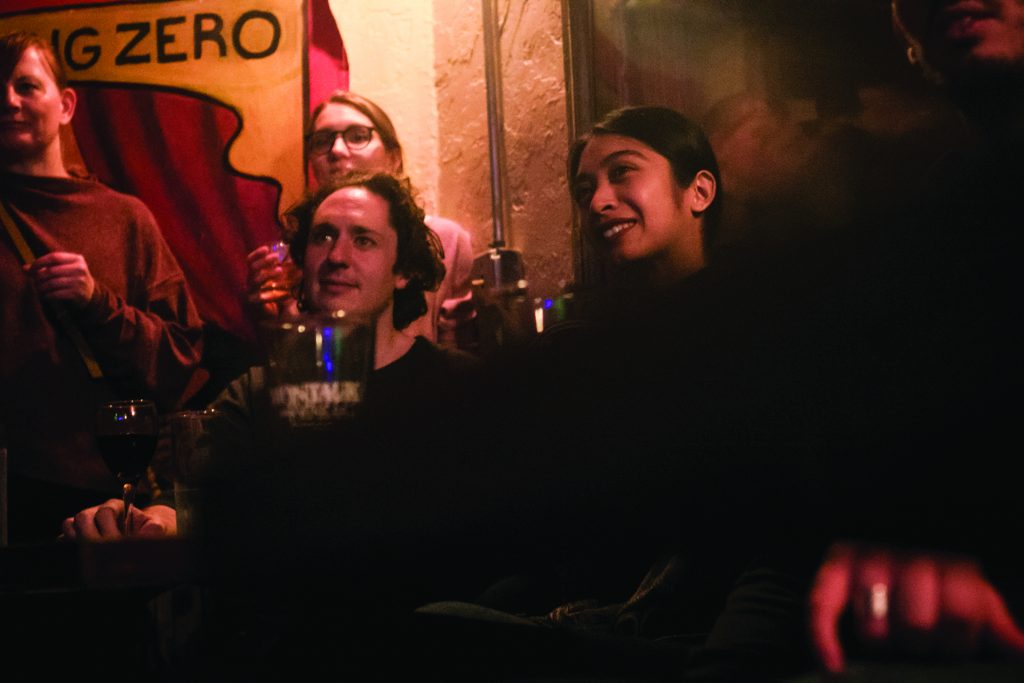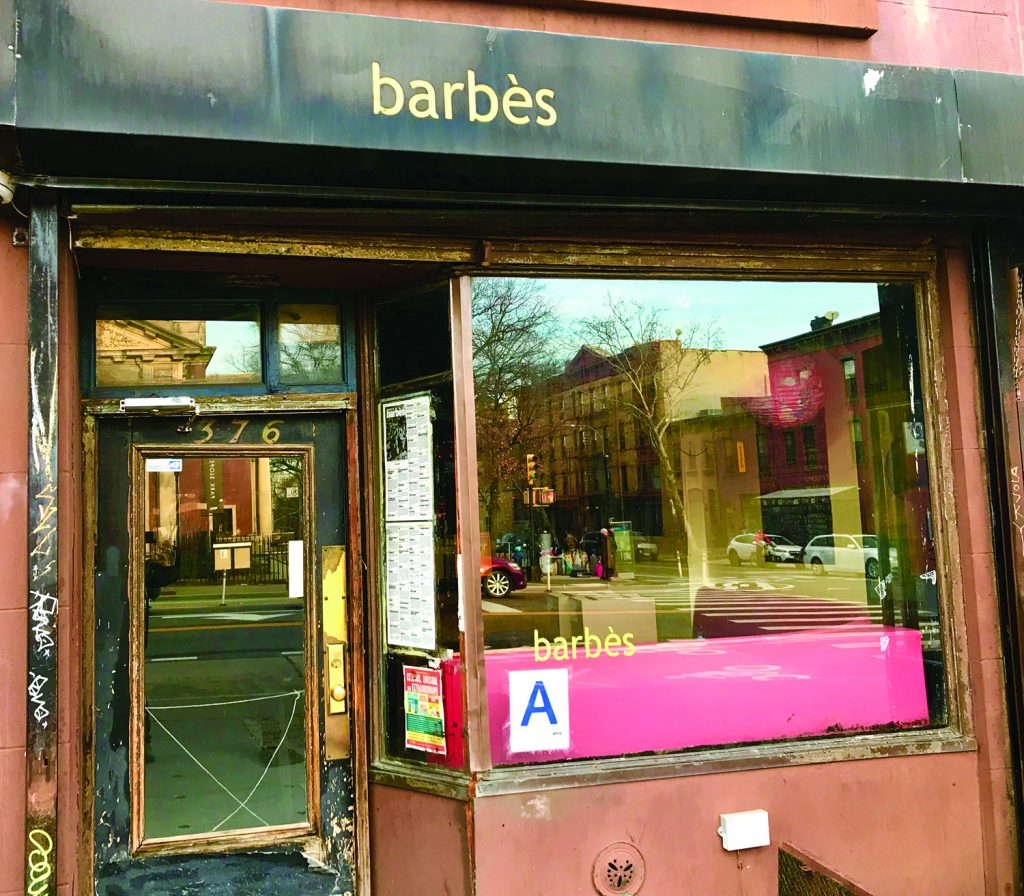Welcome to the new sonic sanctuary in Park Slope
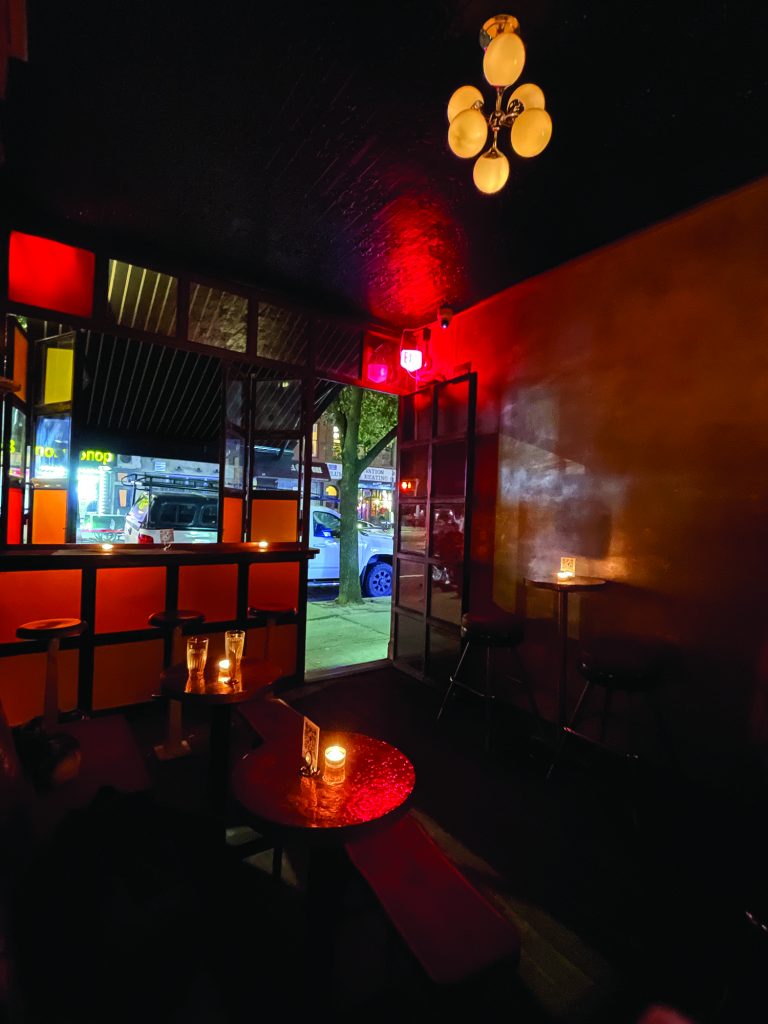
If you happen to be trudging down 5th Avenue on an icy night, seeking refuge and a stiff drink to warm your hands and heart, you can’t do better than Honeycomb. The trendy Japanese listening bar officially opened its doors mid-November, and has already proven itself to be a welcome addition to Park Slope’s late-night lounge scene. With a Rubik’s Cube-esque exterior paneled in vibrant tangerine hues and an inviting open window that spills the sound of old jazz records into the night, the bar exudes the same warmth and coziness as a Thomas Kinkade painting. But there’s just one hurdle potential patrons must overcome before gaining access to this safe haven: the door, also arrayed in glass panels, blends seamlessly into the exterior, with an unobtrusive handle that’s nearly impossible to make out in the dark.
“Yeah, I should probably put a sign out,” owner Jon Carlson said with a sheepish chuckle. “People have been knocking on the residential door next to us looking for the entrance.”
A mere six months ago, Honeycomb was just a twinkle in Carlson’s eye. He’d left New York during the pandemic and hadn’t decided whether he’d come back and open another business, but then a friend of his directed his attention to an up-for-rent space nestled between a real estate agency and a pizza joint. That, plus the serendipitous discovery of a vintage Japanese amplifier in his Wisconsin storage unit, planted the first conceptual seeds of Honeycomb in his mind.
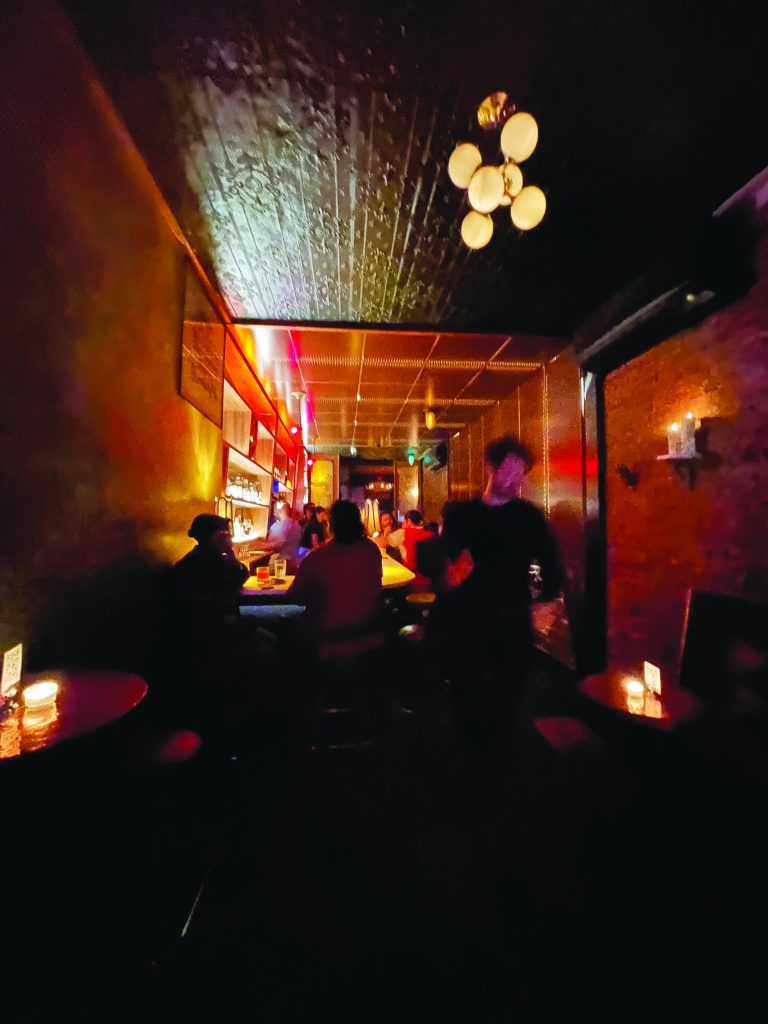
“I started researching and ran across the history of the Japanese listening bar, the kissa tradition. It started after World War II when hi-fi equipment was elevating and American jazz was blowing up,” Carlson said. “I thought that was a good idea and maybe I could do a version of that. Then I saw there’s one in Barcelona, one in Mexico City — it’s becoming a thing. So I thought, I’m just going to go with it, why not.”
Armed with years of experience building and designing interiors, when Carlson surveyed the space, which had formerly housed another bar, he could tell that the bones were solid. But one aspect that made him anxious were the acoustics, which, of course, needed to be impeccable for a bar with such a heavy emphasis on the aural experience. The solution? Enormous slabs of MDF board perforated in a grid pattern which Carlson fabricated himself — they blanket the majority of Honeycomb’s walls and ceilings and serve to absorb and diffuse sound waves, making both music and conversation clearer and easier to hear.
“Sometimes you go into a public space and there’s music on and it’s bouncing everywhere, you can’t really hear the music or yourself think,” Carlson said. “The music can be pretty loud in here, but you can still hear each other talk, even at normal volumes.”
Having squared away the acoustic angle, Carlson then turned his attention to other design details, such as the seating and shelving. Most of the furniture in Honeycomb was built by Carlson himself, imbuing them with a certain character that’s lacking in readymade furniture; for example, two shelves behind the bar meet at a slightly off-kilter angle due to the room’s dimensions, an aesthetic quirk Carlson then incorporated into the DJ rack and the booth seating. The result is charming yet cohesive, representative of Carlson’s particular vision.
“The classic Japanese bars look like an extension of a living room, so I tried to make it feel like that,” Carlson said. “The design really came out of how the room functions. I just work with the room and make everything flow.”
A good-looking set-up may help attract new customers, but what keeps them coming back are delicious drinks. Honeycomb’s menu is fairly tight and curated — some classic cocktails, some solid wine, some sipping mezcals, some rare Japanese whiskeys. As for beer, Carlson didn’t want cans and bottles scattered everywhere, so for now your only options are a pilsner, a stout, and an IPA, all sourced from Brooklyn-based brewing company Circa. But if you’re hankering for something that Honeycomb doesn’t have, you need only say the word; Carlson is very much open to suggestions.
“The menu will continue to evolve. That’s a work in progress too: just seeing what people like and respond to, and then keep tweaking the offerings,” Carlson said.
As for the music itself, the piece de resistance, you can rest assured that when you visit Honeycomb you’re placing yourself in the capable hands of bona fide audiophiles. Behind the DJ booth lives a floor-to-ceiling case housing an ever-expanding library of records, many of which are Carlson’s own; some date back to his high school days, while others have been picked up at small, local record shops during Carlson’s travels in the Midwest. Several of the bartenders have made contributions from their personal collections, and the DJs will oftentimes bring their own selection as well, spinning everything from Sade to Sonny Rollins.
“Records are fun because once you have them you have them. They’re fun to look at and people like to leaf through them,” Carlson said. “With digital, with streaming, you have everything, but you actually have nothing. It’s all there but it’s not. But with a record, it’s here. It’s just going to be sitting there every day. I kind of like that.”
Whether you’re looking to enjoy a well-made Negroni, kick back and soak in some good tunes, or impress a new date with your tasteful choice in venue, Honeycomb should be your destination du jour. Though there are still a few kinks to be ironed out (according to Carlson, people have also gotten confused attempting to locate the restroom), it seems like this new addition to the neighborhood could be a well-patronized watering hole this winter, an oasis of warmth and music amidst the cold and dark.


